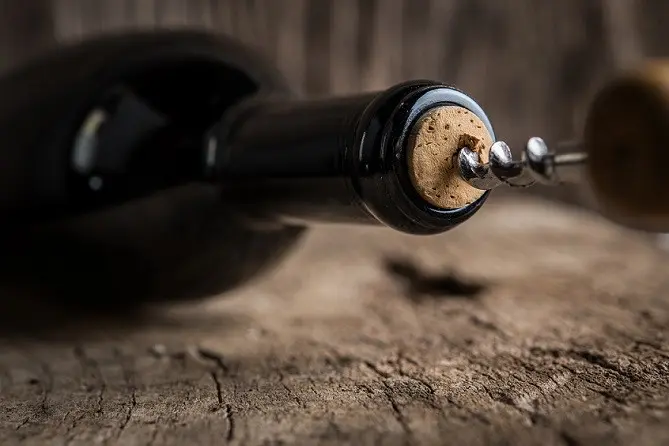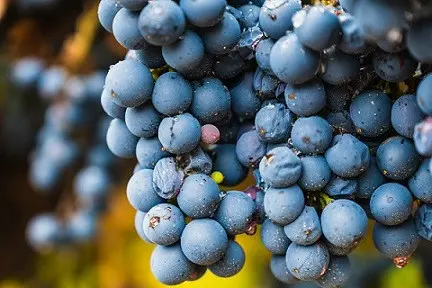WINE CELLAR: WHAT YOU SHOULD CONSIDER
Do you like drinking wine and want to store your favourite varieties in your own cellar? No problem, because with a little time and know-how, any cellar can be turned into a real wine cellar in no time at all. Here we reveal what you need and what you should look out for when building your own wine cellar.
Requirements for wine cellars: As a living product, wine makes demands on its storage location or wine cellar.
Constant temperature: A wine cellar temperature between 10 and 14°C is ideal, but it can also be higher or lower, but should never fall below 4°C or rise above 20°C. Wines age more quickly at high temperatures, which is particularly undesirable for lighter white wines, and there is a risk that they will start to seep at the cork. More dangerous than wine cellar temperatures that are too high or too low are temperature fluctuations, which should be avoided as far as possible. The tolerable temperature changes should be as gradual as the change of seasons - old natural earth wine cellars offer clear advantages in this respect.
Stable humidity: Wine cellars should be neither too dry nor too damp. Good ventilation is of great importance, as musty odours can be transferred to the wine.
Good air: Musty wine cellar odours can have a negative effect on wine through the cork. If strong odours of any kind are present, wine collectors should never be tempted to store their fine wines in this wine cellar in good hope. Crude oil, turpentine, camphor, essential oils, herbs, washing powder or other substances: as long as they can be smelled, wine will also be affected by them if stored in a wine cellar for a longer period of time.
Silence: Vibrations and shocks in the wine cellar have a negative effect on the storage of wine. Possible causes are motors (e.g. washing machine), road traffic or railways.
Darkness: Wine cellars that are protected from daylight are ideal. However, direct sunlight must be avoided under all circumstances.
Position: A study has shown that wines are best stored upright. Ideally, the air in the wine cellar should have a relative humidity of 50 - 70%. Even when stored upright, the cork absorbs enough moisture so that it does not dry out. On the contrary: when bottles are stored horizontally, the cork often becomes too moist, causing more wine to evaporate. In addition, substances are more likely to seep into the wine from the more humid cork when stored horizontally. Wine cellars with upright bottles also have the advantage that you can find the wine you are looking for more quickly and do not need to pull all the bottles out of the rack. Sceptics are advised to test both variants. Mark the fill level with a pen or adhesive tape and check every 6 months where more wine has evaporated. Several Delinat employees have converted their wine cellars and have been storing their wines upright for years.
HOW TO WALK AND ON WHAT - WHICH FLOOR?
Not only special shelving systems but also the physical characteristics of the room contribute to the professional storage of wine. It enables optimum temperature and humidity, which are essential for the professional, long-term storage of wine. Traditionally, cellar rooms are used for wine storage. While the location and characteristics of the wine cellar are already designed for future use in the planning stage of a new building, it often has to be remodelled and redesigned for this purpose in occupied buildings.
The overall visual impression of the room is conveyed not only by the type of wine racks, but also by the material and colour scheme of the ceiling, walls and, last but not least, the floor. If the future wine cellar also includes a table and seating for wine tasting, the design should be given special attention. The floor, especially the area that is not covered by storage systems and any furniture, creates a "room climate" in several ways: On the one hand, it helps to influence temperature and humidity, and on the other, its texture, with its colour, structure and decor, shapes the fluidity of a wine cellar. Earth cellars, which are built on dense soils, as well as old vaulted cellars offer different conditions for the construction and preparation of a wine cellar floor than new buildings, which are usually built on concrete foundations. While excessive humidity is often problematic for wine storage in traditional cellar systems, cellars built in modern construction methods with relatively dry room air often require additional regulation of the room climate, for example through cooling, occasional moderate moistening of the floor covering or ventilation.
There is a wide range of products available for the design of the wine cellar floor, which can be used to realise the physical, design and ecological aspects of the room. The following criteria should be considered when selecting materials, taking into account their utilisation:
Nature (stability, load capacity/pressure resistance, slip resistance, surface durability, maintenance requirements)
Structure and decor of the material (possibly with visual adaptation to the storage system)
Colour (complementing or contrasting the colour scheme of the storage system). Light colours create a greater spatial effect, but are more sensitive to soiling (e.g. from red wine stains), dark colours either harmoniously complement the furnishings or provide an attractive contrast.
Natural materials:
- Wood: The traditional ecological building material for flooring ranges from hard coverings in the form of the tried and tested large-format Plank wood to the elaborate Parquet flooring, as used primarily in the wine cabinet as an elegant, cosy wine tasting room. (So-called ceramic wood tiles are not made of wood).
Wood adds a warm and natural touch to wine cellar design, especially as it has also been used in wine production in wooden barrel cellars for thousands of years. Wooden barrels are usually made of hardwoods such as oak, which are ideal for wine cellar flooring due to their durability, stability and perfect adaptation to the room climate. The wood used for Barrique barrels The oak barrel staves used are also available as parquet flooring for the wine cellar after extensive special treatment.
Cork flooring: Like wine bottle corks, the material for cork tiles or parquet is also obtained from the bark of the cork oak. With a wide range of colours and a special wood or stone look, medium or dark colours should be preferred. Laying and cleaning this pressure-sensitive material is relatively uncomplicated.
Mineral coverings: They are among the "classics" among wine cellar floors, as they have a significant influence on the ambience of the room. They are recommended due to their material properties:
Natural (working) stone: Depending on the type, natural stone sets different accents in interior design. Due to its special usage properties Ceramics as glazed stoneware tiles or fine stoneware as well as coarse ceramic tiles Clay pavers (bricks) into consideration. Particularly recommended for a wine cellar floor are Brick. Bricks are characterised by a porous structure and can therefore absorb moisture better - and also release it again. Thanks to their high material strength and very long service life, they are among the traditional, particularly suitable floors for wine cellars, especially as they also contribute to an optimum room climate. The colourfast and colour-fast material offers protection against abrasion and scratches.
An attractive alternative is offered by Stone carpets made of rounded marble pebbles in different grain sizes and colours.
Natural stone containing lime are also Granite and Basaltwhich are highly resilient due to their hardness, and Marblewhich, however, is not very suitable for the wine cabinet due to its sensitivity to stains.
- Clay slate has a certain relationship to wine, as the Riesling vineyards on the Moselle, Saar and Ruwer, Middle Rhine and Ahr are made of Devonian slate. As a building material for wine cellar floors, it is characterised by its high resistance. Its colours range from grey to black, with reddish or greenish tones being less common. Textured surfaces should be favoured for flooring due to the risk of slipping. Impregnated boards are used for easy-care floors. An alternative is Porcelain stoneware made from imitation slate (with slate look).
- Exposed screed: Concrete or cement screed foundations were previously used almost exclusively as flooring in the commercial sector. Due to its material advantages and cost-effective design, polished, coloured and sealed screed is now increasingly being used in residential properties. Its seamless, smooth surface is easy to clean and has an almost unlimited service life.
Tiles in natural stone look are characterised by their lower thickness compared to marble, granite or slate, which makes them easier to lay. They are also uniform in colour and surface, easy to clean and relatively inexpensive.
When choosing a suitable floor for the wine cellar, you can also consider materials that are particularly suitable for outdoor use (e.g. robust teak).

WHAT ELSE DO I NEED TO CONSIDER?
What are the conditions in a good wine cellar? A good wine cellar is dark and quiet. It also has a high level of humidity. So preferably choose a room without cellar windows or close existing windows - for example with boards or dark cloths. If this is not possible, you can also leave the wine bottles in the boxes in which you bought them. This is because light promotes chemical reactions in the wine and can have a negative effect on the taste, colour and aroma. Also make sure that the wine cellar is as quiet as possible, as wine does not tolerate vibrations. A cellar located directly on a busy road is therefore highly unsuitable. Even if you have a quiet room available, you should also place the wine racks on a springy base. Always store the wine bottles with the label facing upwards! This way, you don't have to turn the individual bottles over to identify them, but can see at a glance which wine it is.
Building a wine cellar and creating optimal conditions. Before you can build a wine cellar, you have to try to create optimal conditions. This can be achieved, for example, through good brickwork. Volcanic tuff, which retains moisture very well, has proven itself for this purpose. It may also make sense to install an air conditioning system to ensure that the cellar does not heat up too much in the summer months. For the floor, it is best to use bricks laid on a thin layer of sand. If the humidity in the wine cellar is too low at times, simply sprinkle the bricks with water. However, it is not only the walls and floor that need to be insulated, but also the door. If this is not possible, ask a master builder for wine cellar construction about so-called climate control doors. Climate cabinets are also an uncomplicated way to optimise the wine cellar. Measuring devices for temperature and humidity are also essential. A good temperature station is therefore a sensible investment in your wine cellar.

If you want to build a wine cellar and store wine properly, there are many other aspects to consider. For example, make sure that the wine always touches the cork during storage! In this way, the wine acts as an air barrier and ensures that the cork does not dry out. The following also applies: white wines belong at the bottom of the wine rack, as this is where it is coolest.
Do you not only want to build a wine cellar, but also equip it with a cosy tasting area? In principle, there is nothing to be said against this, as long as you make sure that this area of the wine cellar is only illuminated with dim light bulbs. This guarantees that the wines are not disturbed in their development. Also favour tables and seating made from natural materials, as these blend in best with the ambience of the wine cellar.
A practical alternative to the wine cellar is the wine cabinet. In contrast to the conventional refrigerator, this allows temperatures of up to 18 degrees Celsius. It also automatically regulates the humidity. However, a wine cellar is only suitable for a few bottles of wine, whereas you can store an entire wine collection in a wine cellar.
Would you like to be kept up to date with our blog articles?
Then sign up for the WENET newsletter right here below!

